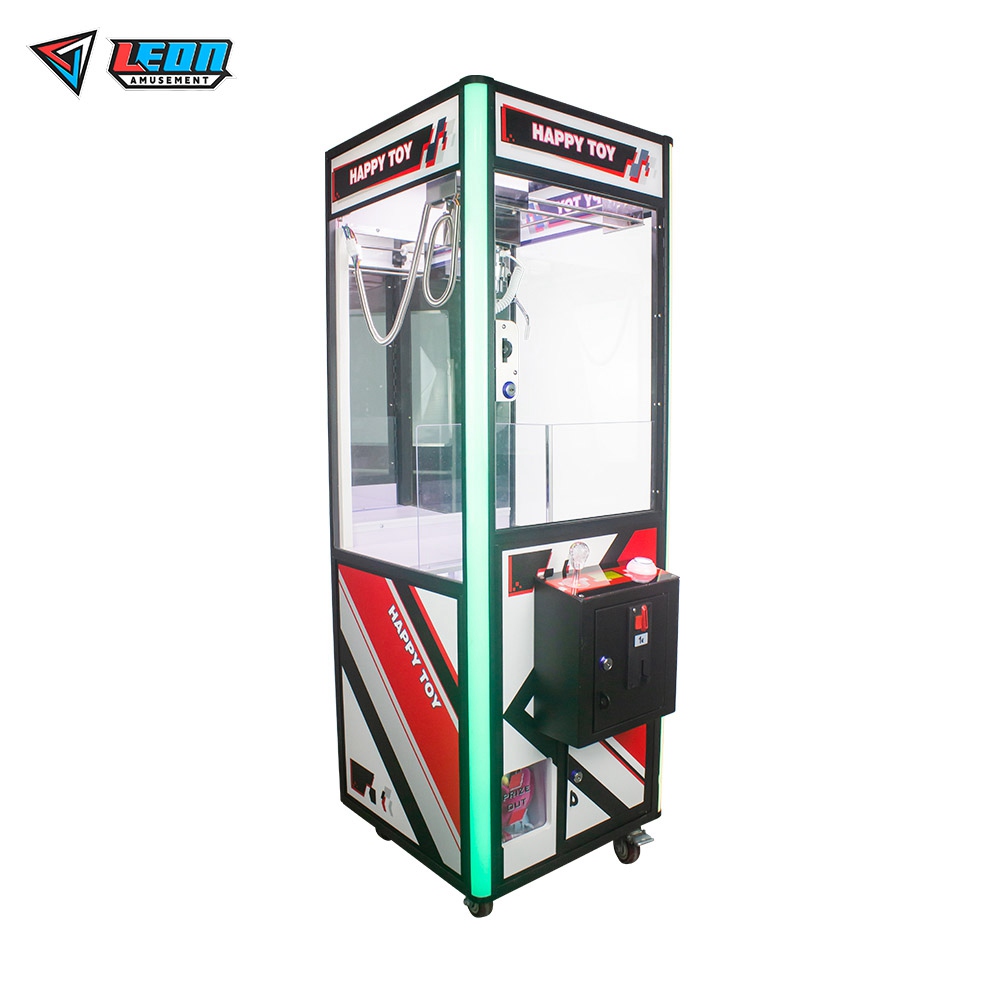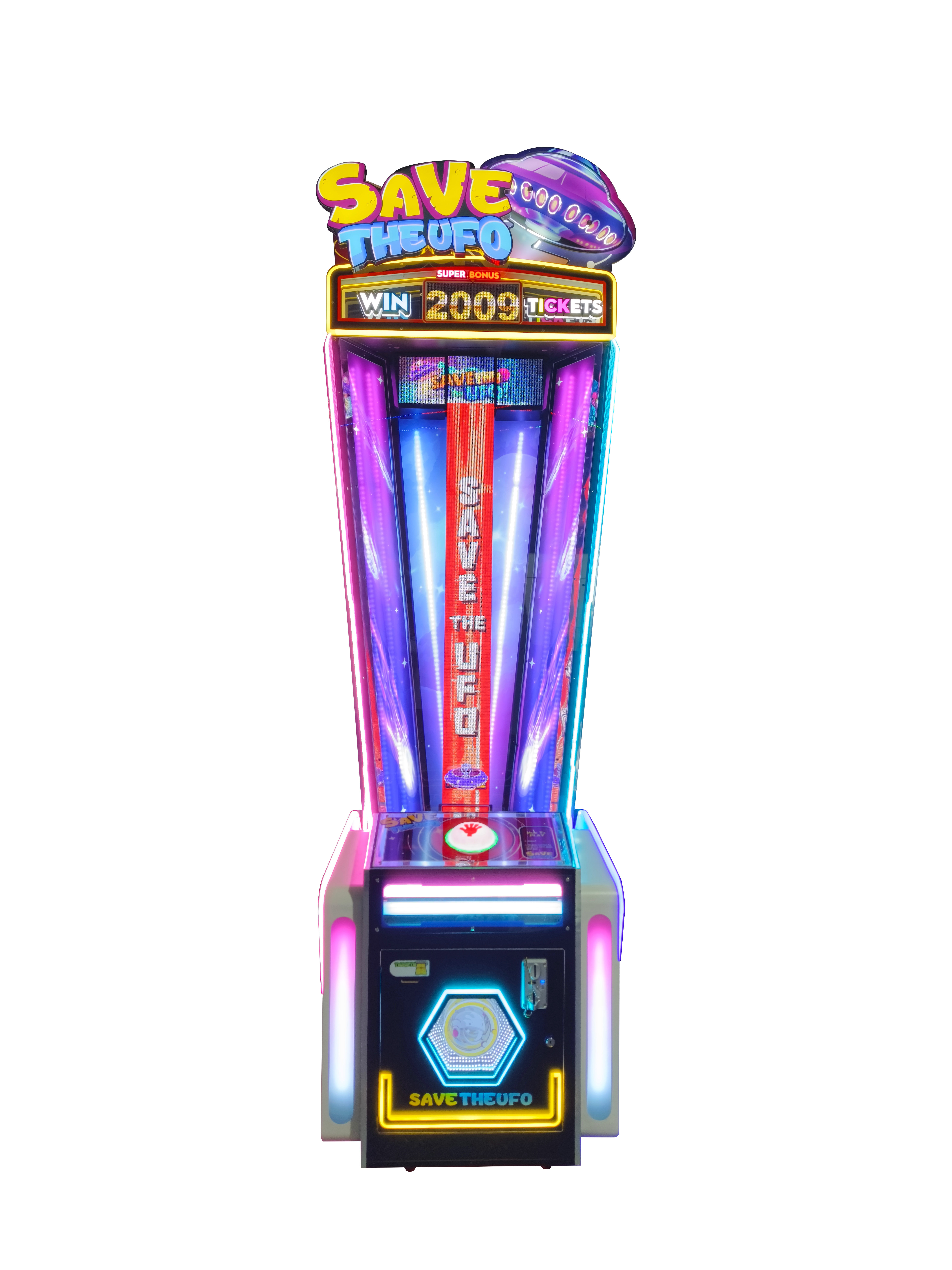Winning the claw machines requires an essential skill. Observe the strength of the claw’s grip; confirm the center of gravity of the toy from all angles, then pick and decide upon the timing to release the claw and give a nudge to the position of the toy, that will greatly raise the success rate.
Table of Contents
ToggleThe Basics
The mystery to most, the arcade attraction of the claw machine—to some, it is a test of a person’s luck; to seasoned players, it’s a game of skill, strategy, and a piece of a psychological challenge. Operating a claw machine involves some basic understanding of its mechanics. But the core of the claw machine is programmed control and a “winning cycle,” which simply means that at certain times of operation, the grip strength is set high enough to easily allow players to grab a toy.
Most of the claw machines have a pre-set “win interval“ which means only after a certain number of plays or a certain amount of money spent, the machine increases its strength. This time interval is not usually told to the players, but experienced players often observe the behavior of the claw and judge whether the machine is in a “grip strength period,” in other words, in a high-grip state. The design of the machine is also designed to keep players thinking, “I’ll get it next time,” in which they continue to keep playing.
Various brands and models of claw machines differ in their grip strengths, claw speeds, and claw angles—all factors that affect their winning difficulty directly. Precisely, mastering these machines normally begins by understanding how such machines work. Some older models increase grip strength slightly after every failed grab of their clamps, while most new models can automatically adjust grip through complex algorithms. Familiarity with such settings makes the moves of a player more strategic.
Types of Claws
There are many designs of claw machines, and each type of claw requires different skills and is suited for various situations. Commonly, there are two-prong, three-prong, and four-prong claws, each with its handling techniques.
The three-prong claw is the most common configuration on the claw machine and best at grasping larger toys. So, its design forms a triangular support structure that offers better stability because it covers the center of gravity. Four-prong claws are less common and usually used in grabbing heavier prizes or unique shapes because the extra prong offers greater stability. It replaces the two-prong claw, which is best to grab slender or uniquely shaped prizes like plush keychains or small toys. A two-prong claw is more challenging to master since only two contact points make it far more difficult to control the grab.
Besides the type of claw, whether the claw has rubber padding or not also contributes to the difference in winning. The friction of the grip increases with the padding, thus making the grabs more stable. At the same time, however, worn padding reduces grip strength substantially. In the actual game, check whether the claw is worn or asymmetrical. These small details make a difference between winner and loser. Understanding types of claws and characteristics will definitely open your mind to and improve performances in playing claw machines.

Grip Strength
Grip strength constitutes one of the factors that determine the probability of winning on the claw machines. Most of the claw machines have set grip strength and only reach adequate levels under specified conditions. Regulations around claw machines in Japan stipulate that grip strength should always be above 70% for a “winning cycle” so the players may win reasonably. In other jurisdictions, however, no such restrictions may be placed on grip strength settings, so most machines will have comparatively low grip, and players will have to wait for the “winning cycle” in order to improve their chances.
How would you know if it’s in a “winning cycle”? Well, you will pretty much tell within a few tries if your local machine is in such a cycle. If, after several tries, it seems that when the claw does finally contact the toy, its grip is weak, it is probably not in a high-grip cycle—that is, it will be hard to succeed, even with skilled handling. Conversely, when the machine is in a high-grip cycle, it holds onto the toy steadily, preventing it from slipping easily.
Experienced players watch the attempts of other players when choosing a machine. If they happen to see several failures in a row, it may mean that the winning cycle will begin precisely with this machine. It’s a judgment based on the observation of a grip cycle and the number of attempts helping to understand the state of the machine for increasing winning chances.
Angles Matter
Angle selection is usually the decisive factor in succeeding or failing to grab a toy. Optimal grab angle depends on the placement for every toy, its center of gravity, and posture. Skilled players always check the placement from various angles and then press the claw drop button in order to determine the center of gravity and the best position for grabbing.
Angle adjustment during grasping of a toy is needed. Generally, the players should view the target toy both from the front and from the side. If the toy, for instance, lies horizontally, then they should target from the front view towards its center of gravity. If it is standing up, then viewing it from the side allows for a better grab point. With heavier toys, it is easier to grasp the head or upper body since these parts are not only more stable but also possess a more focused point of gravity.
Some even slightly adjust the angle of the claw to get a better grip by tilting it to increase the contact area between the claw and the toy. This prevents too much pressure of the claw on the toy, which decreases grip strength. For the smaller prizes, other players target the edge of the toy rather than aiming for the center for better control of the claw angle and to prevent the toy from being squeezed out of the grabbing area.
Timing Tricks
Mastering the timing is a skill, and good players seem to know exactly when to push the drop button to get the claw to interact with the toy at just the right angle. Most machines have a slight delay at the start of the claw descending; therefore, it is necessary for a beginner to get used to the response time of the button in that particular machine.
Observation during the process of grabbing is also involved in timing control. Many players assess the grip of the claw by watching it in interaction with the toy as it goes down. In instances where the claw slides off the toy at the time of contact, the current grip strength might be low. When the claw grabs stably, it usually indicates strong grip strength, hence higher successes.
Players with experience are cool, get their grip, and do not mash buttons around. Generally speaking, good timing is all about the position of the toy, adjusting moves rather than continuously pressing the button. In the case of more difficult toys, waiting for an optimum position often does the trick instead of rush and grab.

Winning Odds
Most of the claw machines are not purely chancy; many of them have the “guarantee win” mechanism: after a certain number of tries, the machine will trigger a successful grab. This setting is usually implemented in order to increase the player’s confidence and build the idea that with just a little more practice and patience, one can win.
It means that the average success rate on claw machines is between 10% and 20%, while those with lower grip strength may even be tougher to play with. Advanced players always “estimate” the number of failed attempts in watching others first, then record failures to determine a rough pattern before jumping in at the right time to take advantage of the “guaranteed win” mechanism that increases their chances of success. Some of them start a winning cycle after 60-80 tries, so guessing the correct timing can bring more luck.
Some machines change their grip strength in accordance with how much players put into them; that is, stronger machines are available after higher spending. So if you have already used up quite a good amount, it might be worth a couple more tries.
However, it is good enough to just observe the pattern of the machine’s state; never rush into jumping in and playing right after seeing others fail. In this way, you’re most likely to benefit from an increased grip of strength. Though not all machines come with this feature, keeping an eye on the patterns may help your judgment.
Pro Tips
It does not take overnight to become a master at the claw machine. Lots of experience apart from honing the skills has to be gathered. The following are some practical tips that the pro player will be able to share with you to better handle different types of claw machines:
Choose the right machine: Professionals will very often sit back and watch arcades looking for those machines that pay out more frequently. If a machine has been played several times without winning, this is very often a good one to try as it will now reach its “winning cycle”.
Carefully observe the target toy: Before grasping, professionals consider a toy’s placement from multiple viewpoints to determine the center of gravity and most advantageous grasp angle. The more one observes, the better the chances for larger toys or toys in unique positions.
Avoid empty grabs: While many novices tend to keep hitting the grab button continuously, pros only wait for the best position or even give up on toys when the grab is clearly well over the difficulty limit. In that sense, fewer unsuccessful grabs will keep your time and expenses to a minimum while increasing your chances of winning.
Use the claw’s “bumping effect: When the center of gravity of the toy is out of the reach of the claw, you just need to bump it with the claw so that it moves to a position that’s more favorable. This works especially well when the situations of a weak grip strength of the claw can’t be avoided. Often you will get a better grip by carefully bumping.
Stay calm, and avoid over-investing: In spite of multiple failures, the expert player keeps his cool as a protection against “revenge grabs”. Over-investing is usually associated with poor judgment, so knowing when to stop and remaining rational improves your chances of success.
Success with a claw machine to a true enthusiast is not more than a game of chance, but rather a mix of observation, time control, and psychological mastery. The more one knows about the mechanics of the machine itself, the better one is able to approximate the strength a grip will need and work out angles of the grab. Mastering these skills alone can make every try enjoyable.








